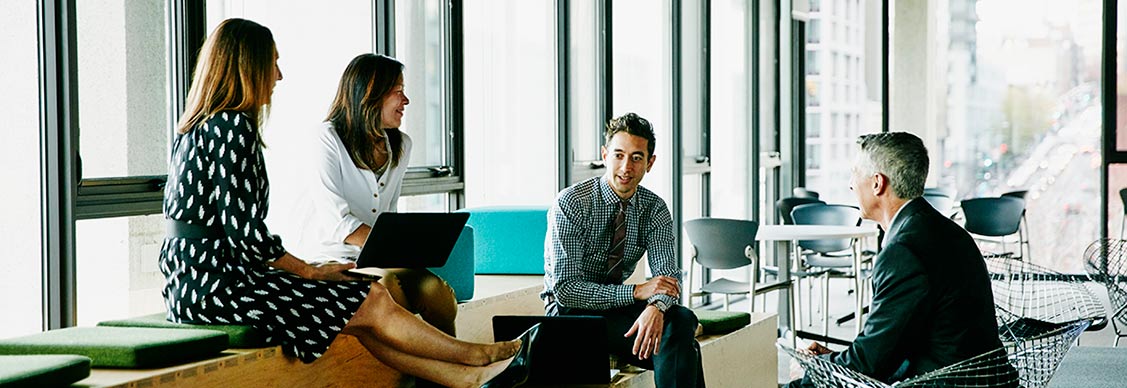From sterile to social: how scientific workplaces are changing
Life science workplaces are becoming less clinical and more collaborative
The DNA of life sciences real estate is changing. Once characterised by stainless steel, blinding-white surfaces, and lab technicians isolated in pristine glass boxes, life science buildings are evolving into more colourful, sociable places led by human-centric design.
Take Bayer’s Warsaw headquarters, which features cozy café-inspired interiors in warm autumn colors, couches, plants, and inspirational neon signs. Or Astra Zeneca’s Milan office, designed to put people first with abundant use of natural materials and recreational spaces to relax.
“Pharmaceutical, biotech and life science companies are competing with other sectors for talent,” says Adrian Davidson, EMEA Head of Design at JLL company Tétris. “We’re seeing a shift from cold, sterile spaces to comfortable, amenity-rich facilities that energize employees, support hybrid work and foster collaboration.”
With the experience and wellbeing of employees higher up the corporate agenda, amenities that are often the preserve of tech and finance corporates are cropping up more frequently in life science design briefs.
“Wellness facilities, gyms and massage rooms, plus large townhall event spaces, are appearing alongside more traditional requirements,” Davidson says.
Thinking outside the lab
Thanks to advances in technology such as high-speed computing, AI, virtual modelling and 3D printing, scientific research is less industrial, cleaner and increasingly data driven.
It’s giving firms the opportunity to fit more elements of the research workflow under one roof – or even on the same floor – bringing together a variety of technical and support-function teams to improve efficiency and speed to market.
Yet the burgeoning life science sector’s flight to quality real estate, especially in more urban locations, means availability of space is an issue, causing investors to reposition and retrofit existing buildings.
While creating the social spaces is relatively straight forward, more technical aspects can prove complex. Proper feasibility studies, life cycle costing and project management are key, says Chris Legg, Associate Director for Cost Management in JLL’s Life Sciences Project Development Services team.
“Converting offices to labs can have hidden costs thanks to the extra ventilation and MEP systems required,” says Legg. “Air changes and controlled conditions may need additional plant on the roof, which adds weight, plus you need greater floor to ceiling height for extra duct space, meaning structural modifications may be required.”
Legg adds that some buildings are easier to convert than others, depending on the building’s original purpose and the extent to which developers of newer buildings aimed for higher building certifications like BREEAM and WELL – also big priorities for life sciences occupiers. Investment firm Kadans, for example, is currently converting two floors of a BREEAM outstanding rated building in London’s Canary Wharf into flexible, fully serviced CL2 wet labs, as well as office accommodation. Ancillary meeting rooms and breakout space will form part of the conversion.
Other asset classes lend themselves more readily to conversion, especially those designed for high volumes of people. “Old retail units or shopping malls are ideal as they have higher ceilings and come with better circulation space, such as central atriums for townhall, café and communal breakout spaces,” Legg says.
A city center retail conversion by the The Reef Group in Stevenage, U.K., aims to attract young talent by repurposing vacant shops into laboratory space alongside cafés, drinking establishments and a cinema, for a more social workplace experience.
Design under the microscope
For people not working in labs, the increase in hybrid working means a more casual, hospitality-based approach helps firms to compete with employees’ comfort-of-home environment.
Sanofi had very clear requirements for the re-design of their South African headquarters, says Davidson. Staff wellbeing was of critical importance and not just light and air quality.
“It had to support flexible working with a big emphasis on coffee culture and comfortable areas to attract people back to the office,” Davidson says. The ergonomics of every single chair was scrutinized.”
Clever mobile or modular furniture – in some cases with integrated power for screens or digital whiteboards – is key, giving users the freedom to “hack the space to suit their needs” when collaborating with colleagues, be that in person or online, Davidson says.
Another pharmaceutical company in California created a “multi-modal” workplace by renovating its existing five storey building. Traditional workstations were combined with breakout, communal, and private spaces, including “pocket parks” intended for impromptu collaborations, small gatherings or quiet moments of reflection.
“Human-centred design makes people feel comfortable,” Davidson says. “Creating pockets of intimacy with more comfort, softness, color and visual variety, supports connectivity on a human scale – and that’s when true innovation happens.”
